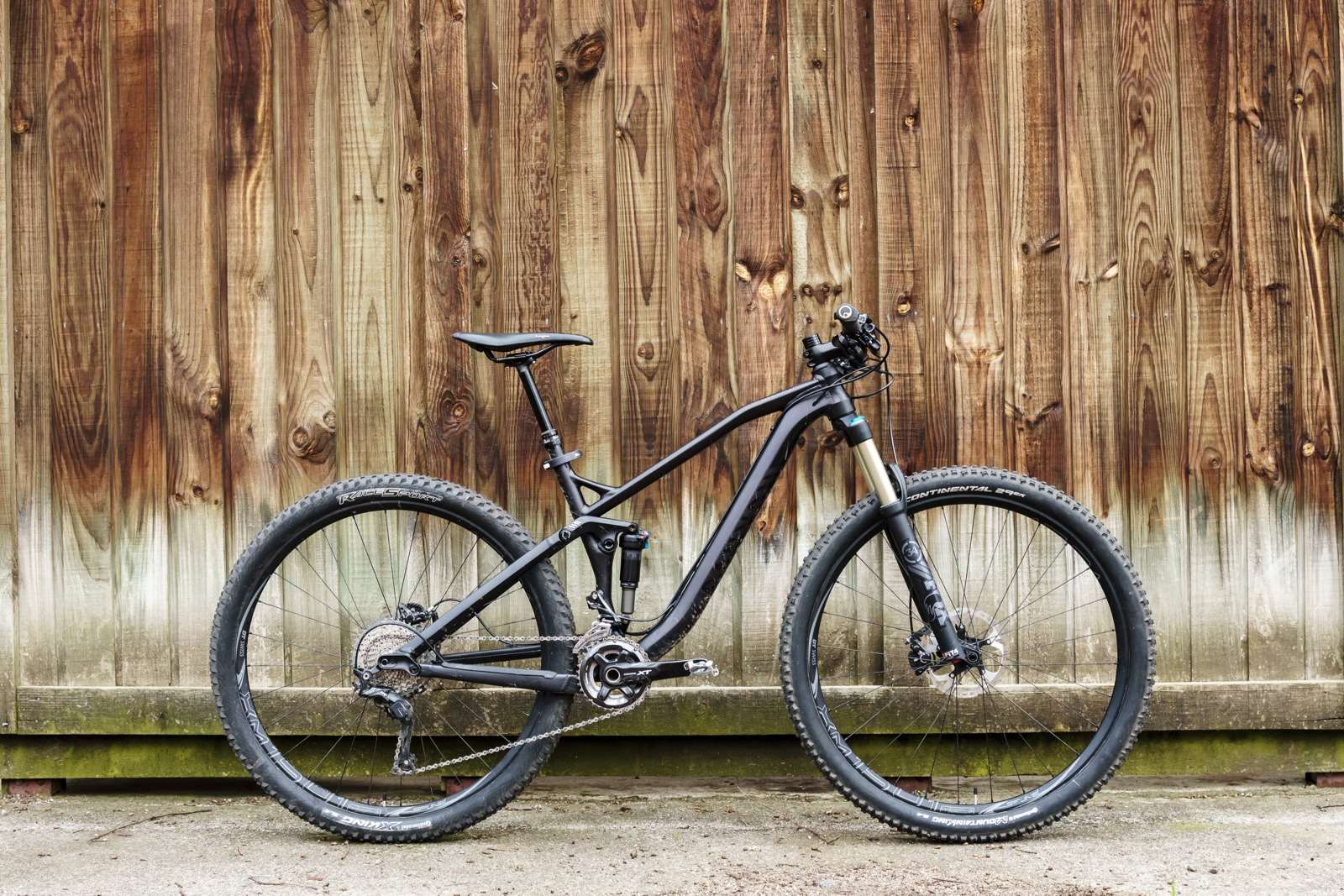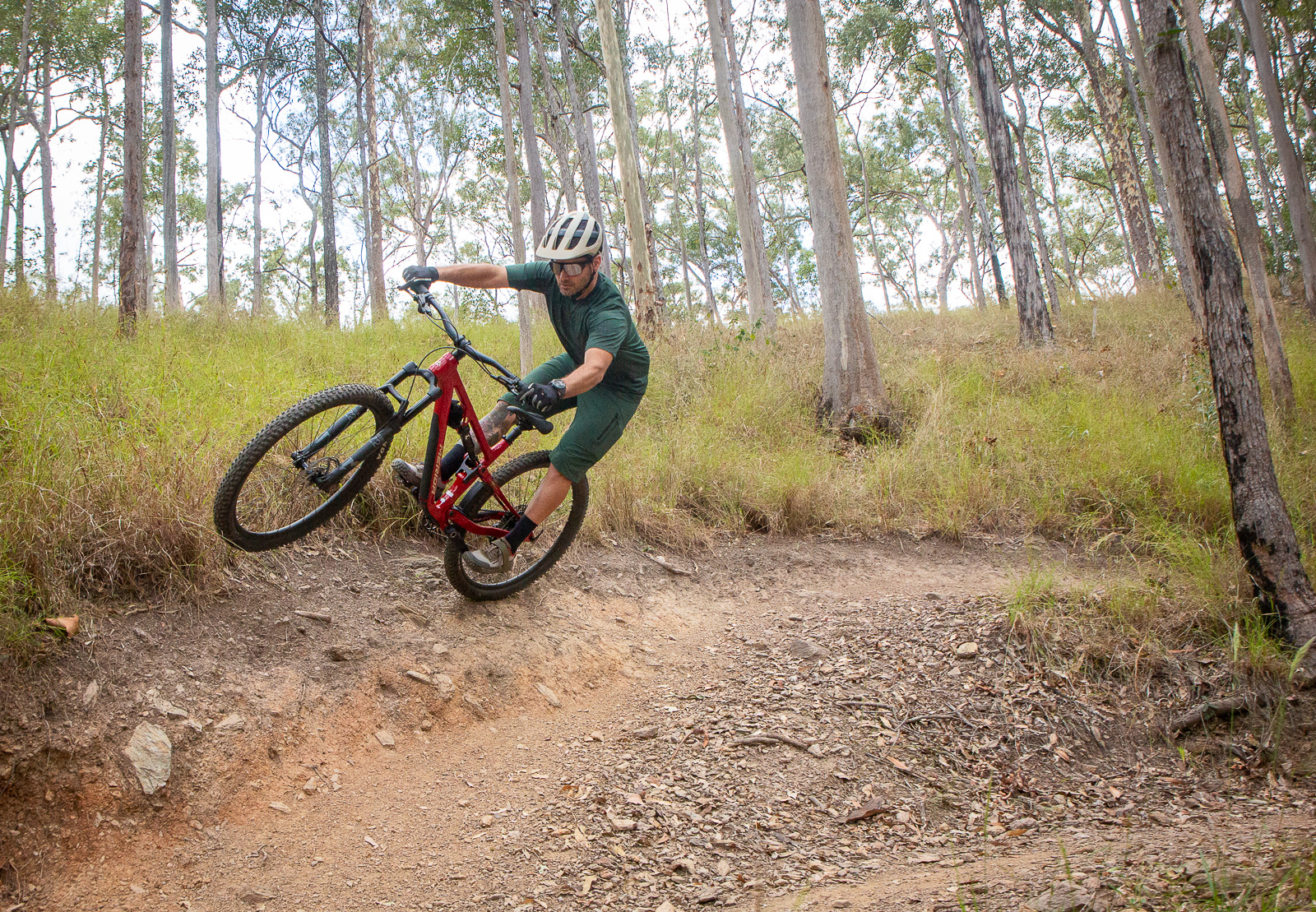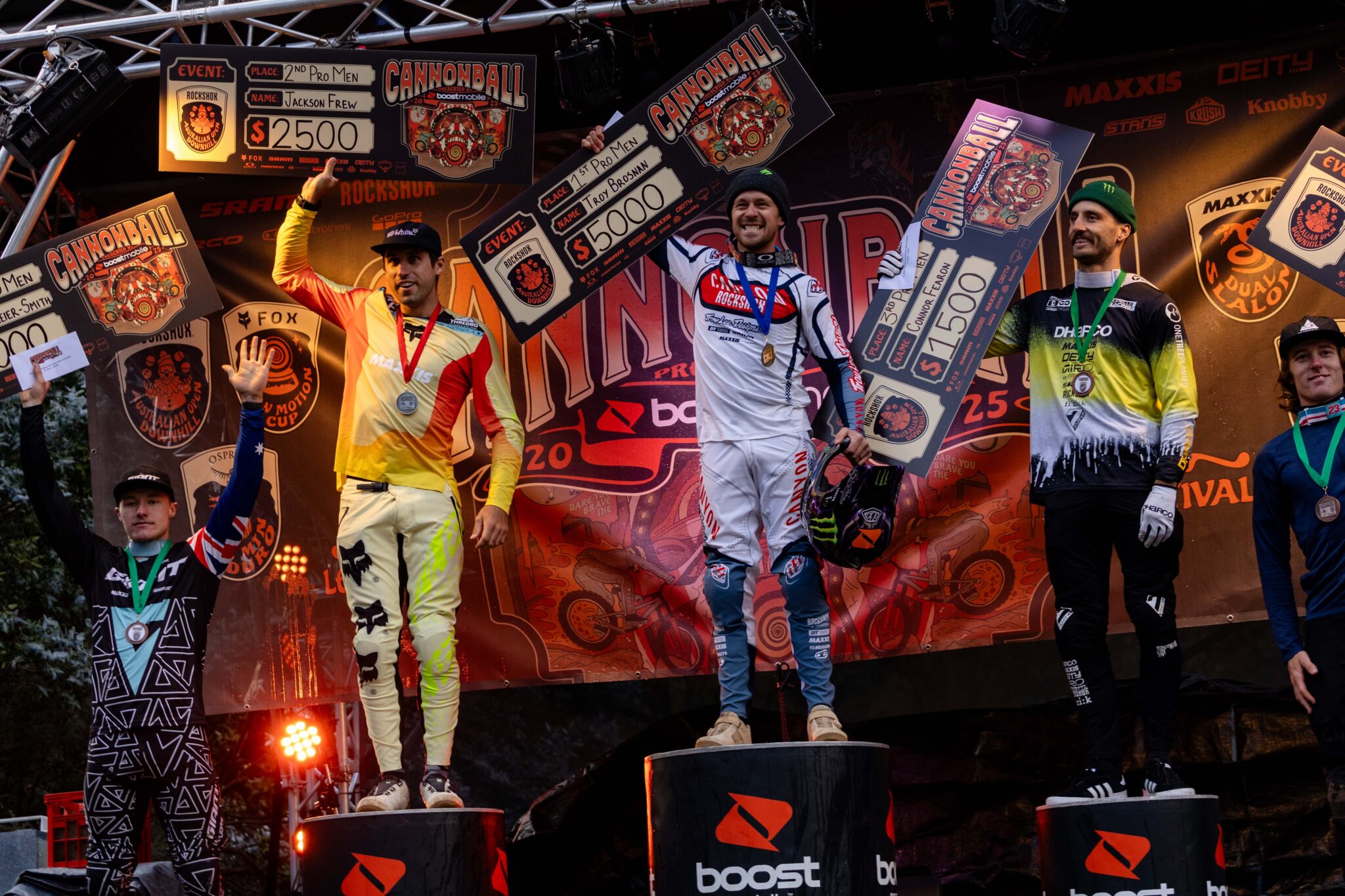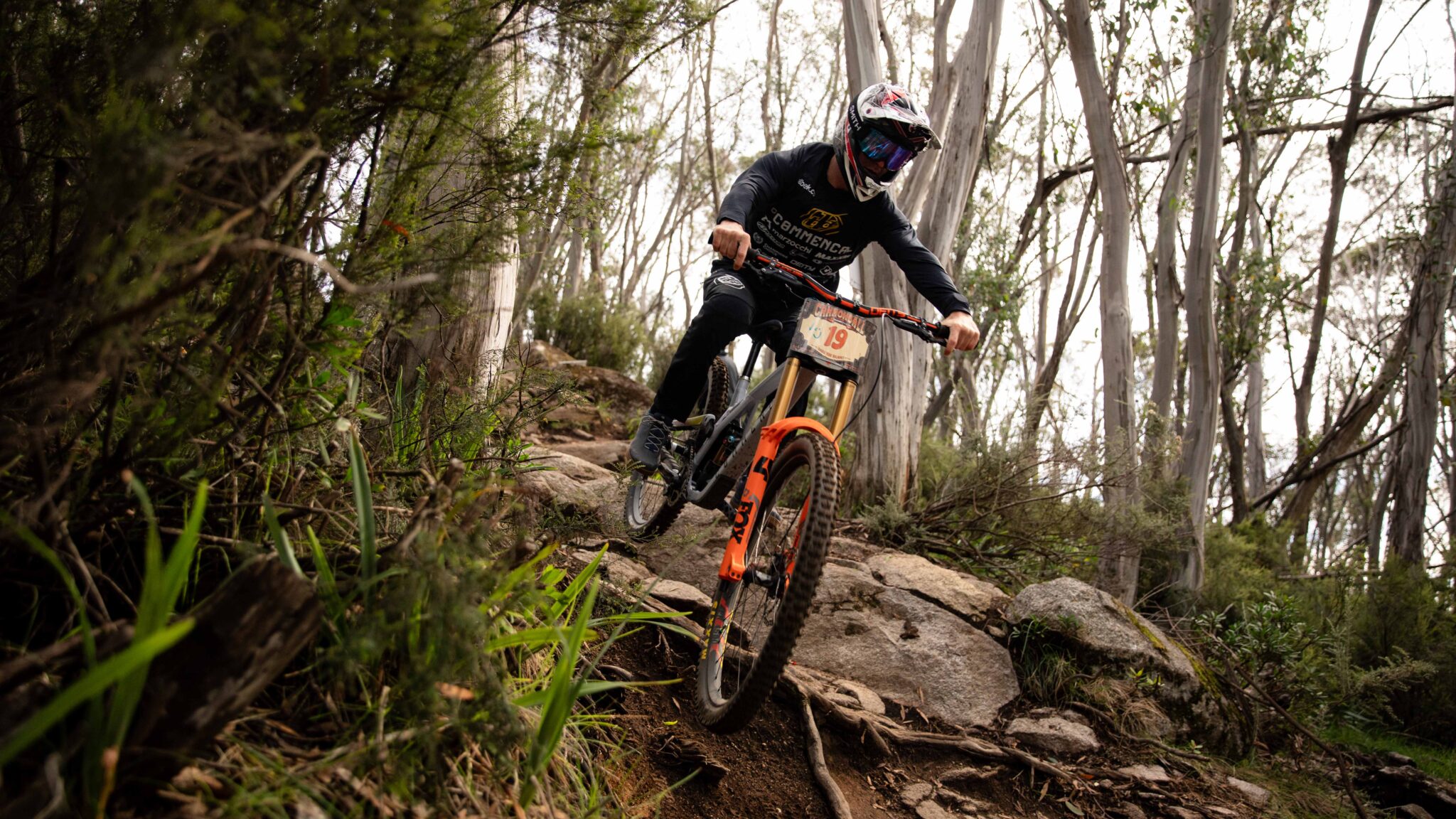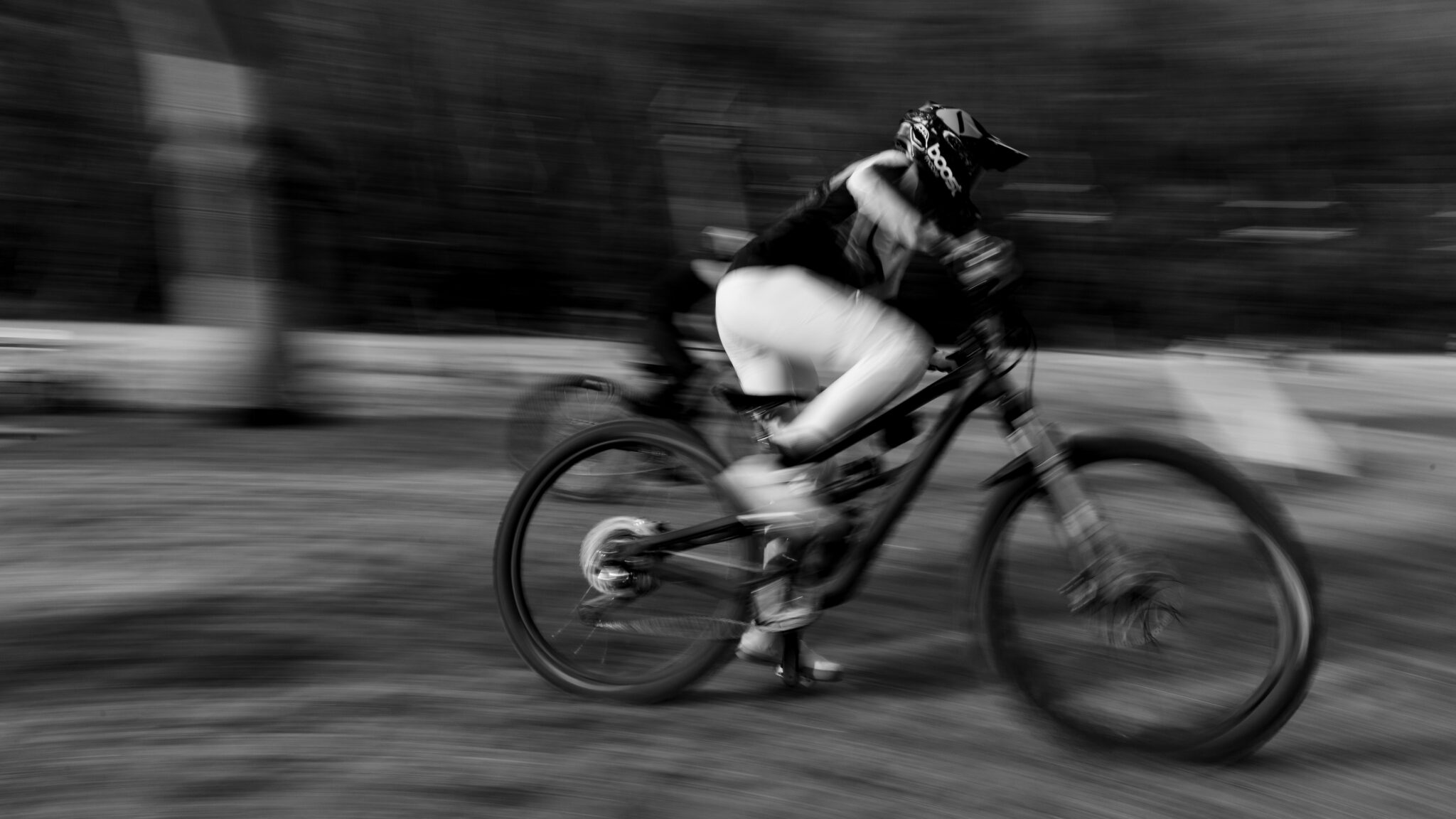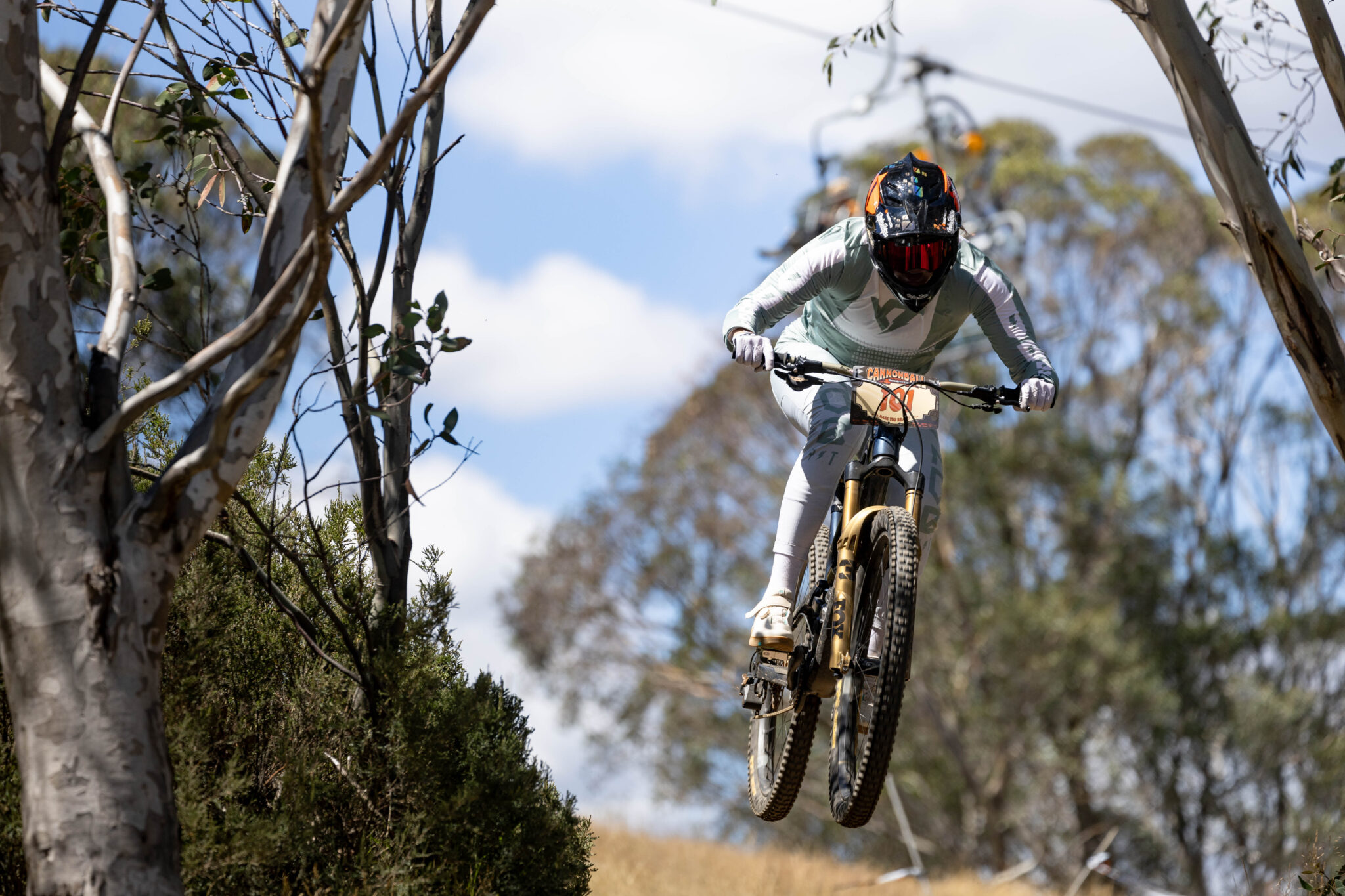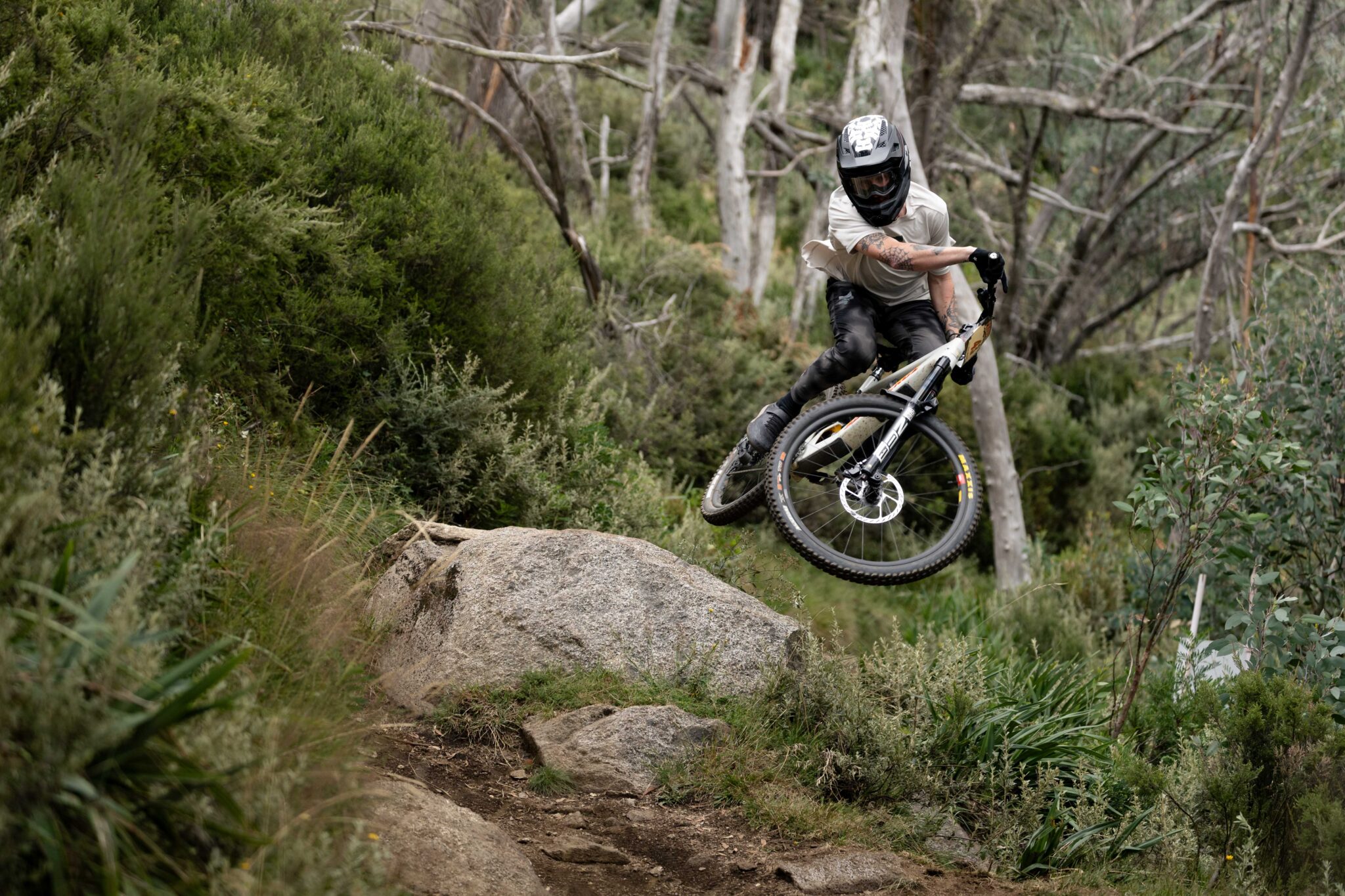TESTED: Canyon Nerve AL
Canyon have made a bit of a splash since arriving in Australia - and the Nerve AL might be the bike for the Australian trail rider.
Photos: Timothy Arch
Since Canyon’s introduction into the Australian market last year, there has been a whole lot of buzz surrounding the exotic German brand. Canyon is one of the first big bike companies to offer a consumer-direct approach to us Aussies, and it’s getting a lot of people excited. Rather than the traditional method of buying a bike through a local shop, Canyon offers customers the ability to buy their bike online, and have it shipped straight to their front door.
All of Canyon’s complete bikes are assembled and prepped for shipping in their new factory in Koblenz, and it was built in order to manage rising worldwide demand. That demand is set to increase significantly in 2017, when the company opens up direct shipping to the lucrative US market.
You may recall reading about our tour of the new facility back in issue #151 of AMB, as well as our reviews of the Canyon Exceed (#150) and Strive (#152). Although the Exceed carbon hardtail impressed us with its light weight, and the long-travel Strive ruffled feathers with its clever ShapeShifter technology, Canyon were keen for us to check out a more versatile model designed for the trail-riding masses; the Nerve AL.
Canyon refers to the Nerve as “the ultimate all-round performer”, and rolls on 29” wheels, with 110mm of travel out back, and 120mm up front. It claims to be an easy pedaller with competent handling, whilst providing a comfortable all-day riding position. In short, it’s a trail bike, and one that’ll be competing against well-known options such as the Specialized Camber and the Trek Fuel EX.
There are currently two Nerve models available in Australia. Both feature an alloy frame, though the pricier LTD model ups the ante with Fox Factory Kashima suspension and a few carbon goodies to lighten the overall package. Canyon does produce the Nerve in a 27.5” platform as well, though this bike is not yet available in Australia.
Delivery Time
Unlike Canyons we’ve previously tested, the Nerve AL 9.9 arrived to me exactly how it would turn up on your doorstep: inside a well-packed box and in the hands of a DHL courier. After purchasing your bike online, it takes approximately 2-3 weeks for a bike to ship from Germany. Shipping will set you back an additional $199, so make sure you factor that into the price of the bike.
Like all of their bikes, the Nerve is assembled, QC’d and test ridden at Canyon before it’s packed for shipping. During the initial strip-down and assessment, I was thoroughly impressed with the build quality. The gears were tuned beautifully, the brakes were sharp, the cassette splines were greased, and each pivot was correctly torqued, lubricated and prepped with Loctite.
Both hydraulic brake lines and the Reverb hose need shortening out of the box, as they come with additional length in order to pack the handlebar properly during shipping. Functionally there’s no real issue with the bird’s nest on the front of the bike, but if you’re like me, you’ll want those messy cables tidied up. Shortening and bleeding the lines won’t be an issue for those who are proficient on the tools, but most riders will need to factor a trip into the local bike shop to have this procedure carried out. While you’re there, you may want to get the steerer tube trimmed down as well.
Initial Impressions
New for 2016, the Nerve frame is both lighter and more streamlined than its predecessor. It bears a resemblance to the 140mm travel Spectral, with a welded alloy frame that features heavily butted and hydroformed tube profiles. Interestingly, Canyon doesn’t disclose where the frame is manufactured. Regardless of its origins though, it does appear to be a well-put together bike. Neat details such as the machined head tube, shapely S-bend seat tube, forged dropouts and countersunk pivot hardware give it a smart look overall.
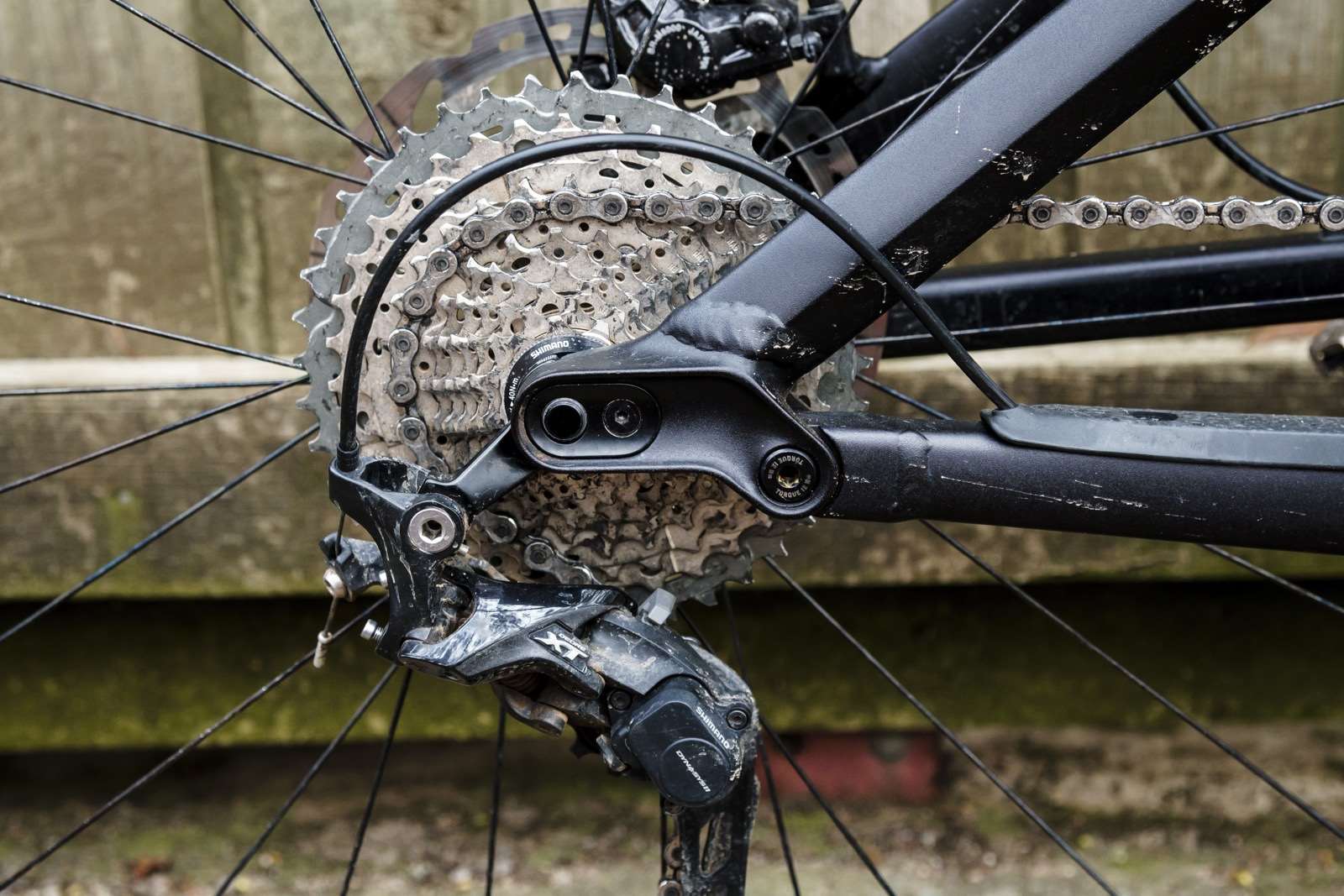
Geometry for the Nerve is well rounded, but it does err on the conservative side for a trail bike with a 69.3-degree head angle and longish 445mm chainstays. Another number that sticks out on paper is the tall bottom bracket height, which sits just 27mm below the hub axles. Relative to the competition, the Nerve does stand a little higher and a little steeper.
This conservative approach extends to the rear suspension design, where a time-proven Horst link is employed for the Nerve’s sub frame. In the interest of pedalling efficiency, Canyon have utilised specific pivot locations to create an “anti-squat kinematic”. All pivots roll on angular contact sealed cartridge bearings, which helps to better manage side loading.
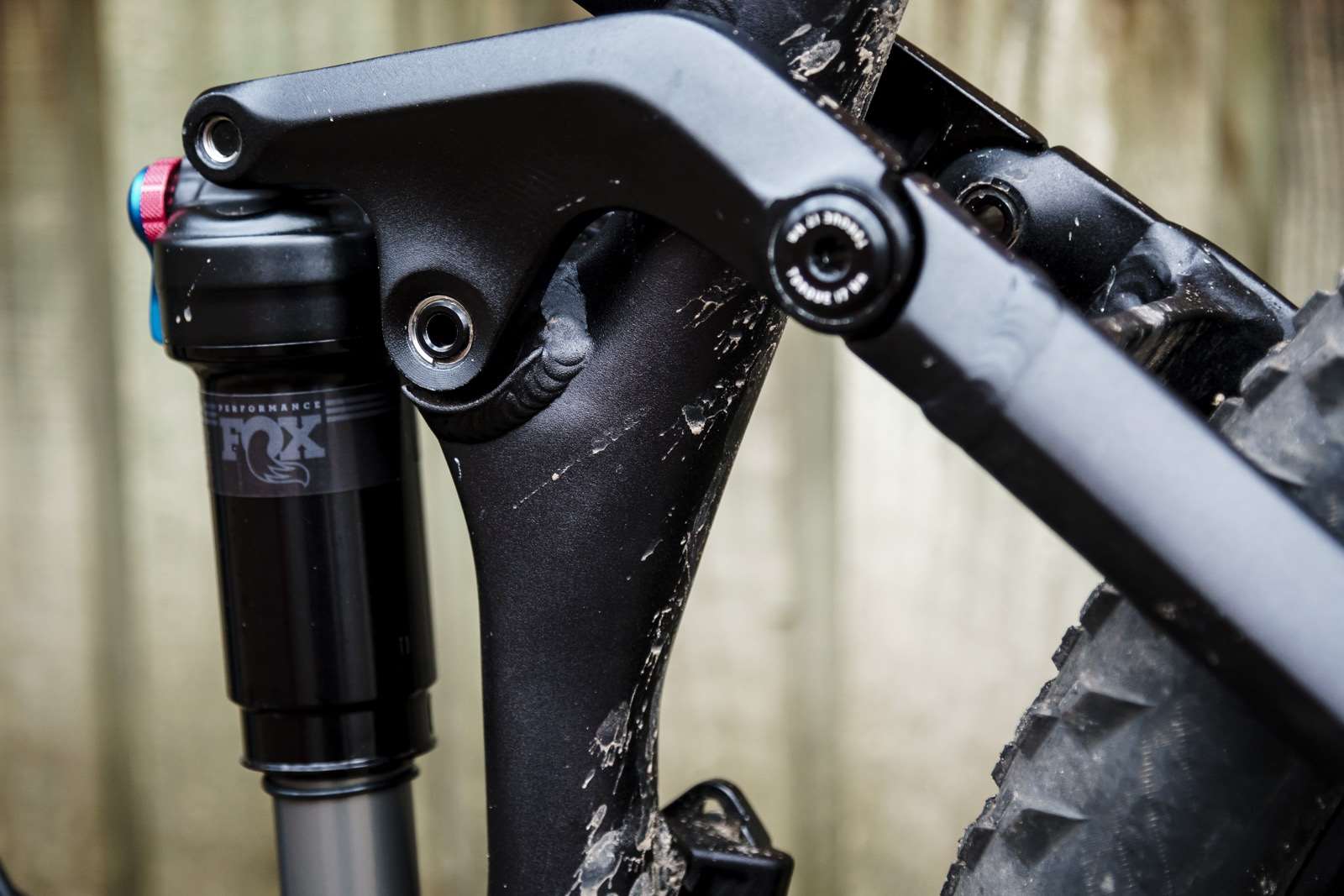
Unusually for a Euro brand, Canyon has resisted fitting remote lockouts to the Nerve’s suspension. The rear Fox DPS shock is spec’d for the bike however, with a low compression and rebound tune, and a firm climb tune. The shock uses a Large Volume (LV) air can, with the second largest volume spacer fitted inside. According to Canyon, the Nerve’s suspension rate is mostly linear, with a slight progression towards the end stroke.
While the geometry and suspension design may not be particularly radical, the Nerve AL 9.9’s build kit is much more progressive. All the things that bike reviewers like me would normally complain about are already addressed with the Nerve AL 9.9. It comes with decently wide bars, a dropper post, and a more aggressive tyre up front. And while many 29ers are still coming with skinny 32mm forks, Canyon has made an excellent choice in the burly Fox 34 for the front of the Nerve. It’s the Performance model, so it doesn’t get the blingy Kashima coating, but it is packed with the FIT4 damper and reworked internals for smooth sliding. Along with the chunky 2.4” tyres and 180mm brake rotors, the Nerve certainly looks like its ready for some fast and rowdy fun.
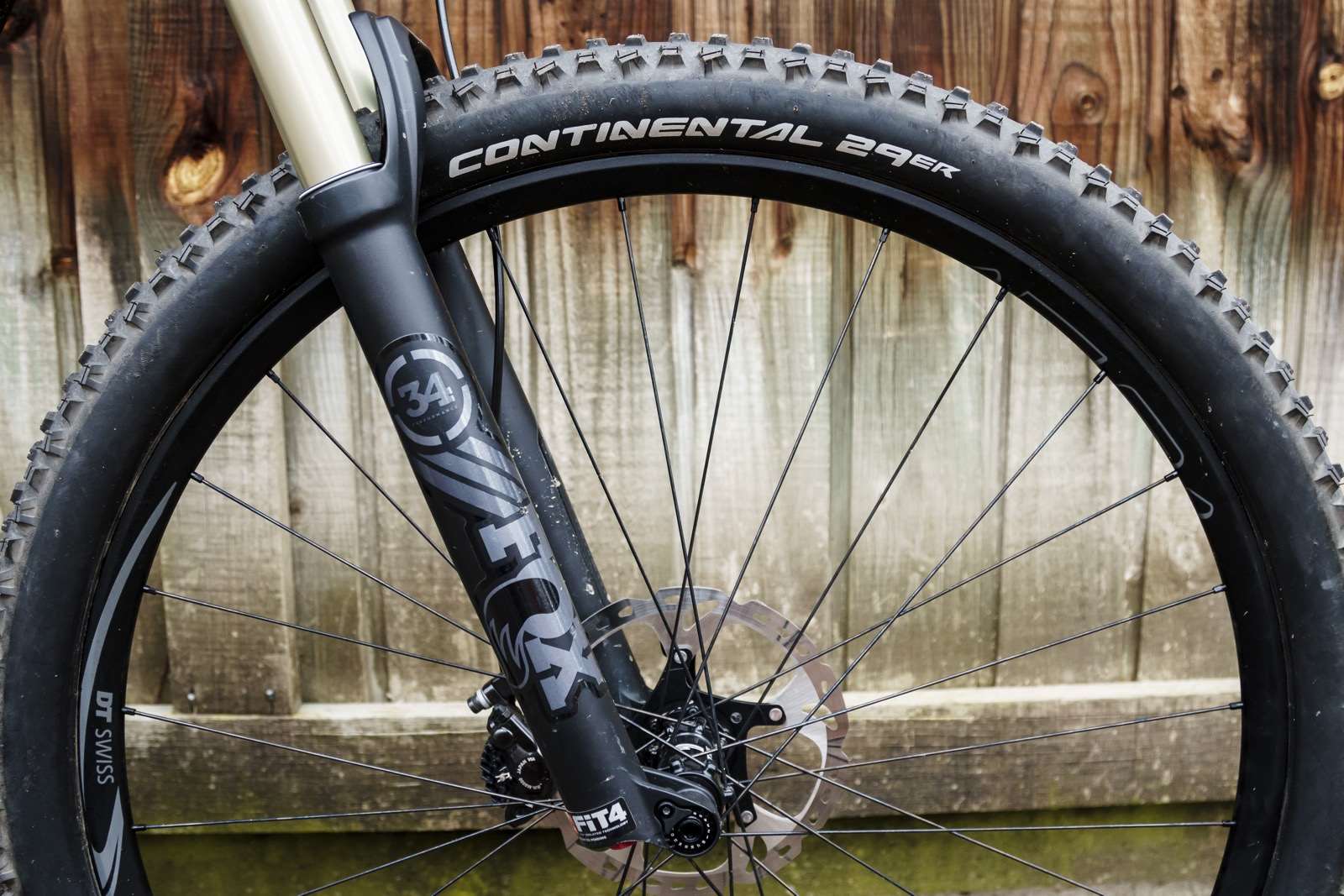
With inner tubes, our Medium test bike tipped the scales at 12.67kg out of the box.
On The Trail
As befitting of a trail bike designed for all-day riding in the mountains, the Nerve sets its pilot up in an upright and comfortable riding position. The 426mm reach on our Medium test bike feels roomy with the 70mm stem length and 740mm flat bar, though I did need to slam the stem in order to get the bars a little lower to the ground.
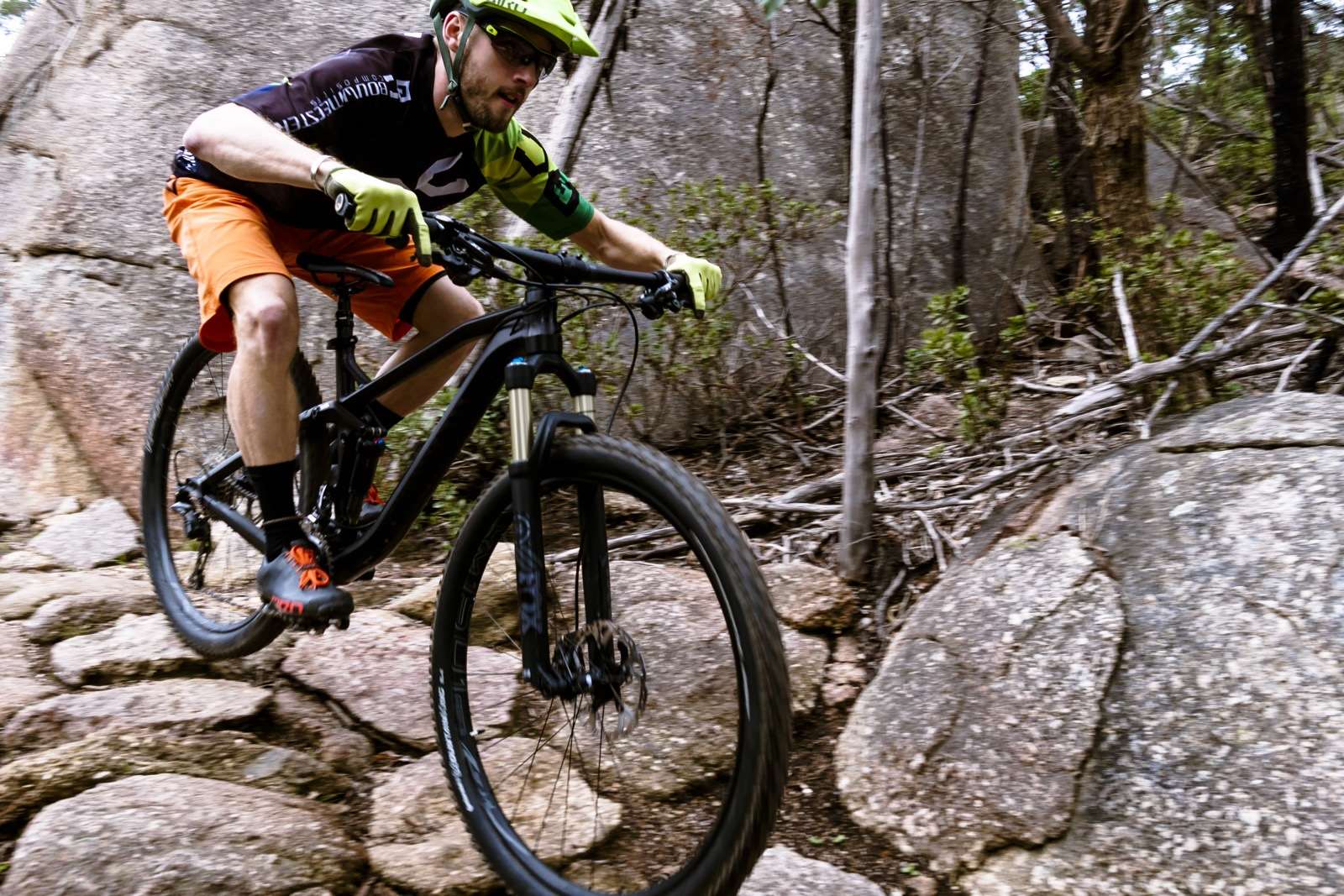
While I’m a big fan of Ergon’s GE-1 grips, I can’t say the same for the thinner GA-1’s with their bulged centre sections and hooked end clamps. Likewise, I have always struggled with the narrow profile of the Fizik Tundra saddle and it’s lack of stability for my sit bones. Yes, I’m aware that contact points are personal preference, but they’re worth mentioning here because Canyon doesn’t offer the ability to change any of the spec options on their complete bikes. So you’re kind of stuck with them unless you buy something else later.
Another early point of frustration was the Continental tyres, which proved to be too lightweight. How light? Despite the big 2.4” bag, the rear Race King weighs just 579 grams! The Mountain King up front is a little sturdier, but both tyres are far better suited to softer soil conditions, and they proved drifty and unpredictable when being pushed into the loose rocky corners that form my local test loop. After numerous rear pinch flats, I decided to make use of the tubeless compatible wheels. While the rims come taped, unfortunately Canyon doesn’t include tubeless valves with the bike, so you’ll have to buy those separately. What is truly baffling though, is that they also spec’d non-tubeless tyres. On a $4k bike. In 2016.
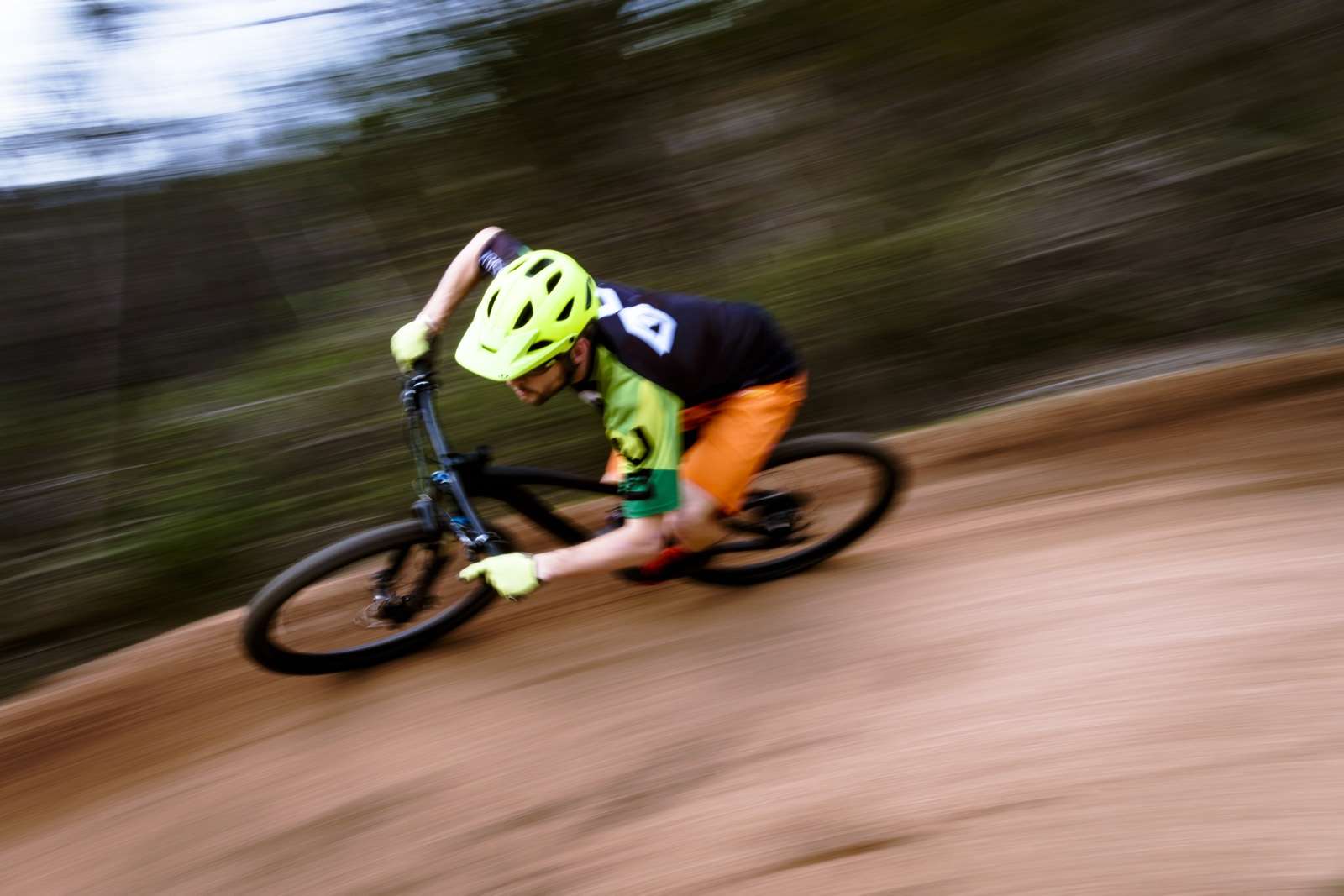
Once I got over that fact, I used the opportunity to slap on some proper tubeless tyres that were better suited to local conditions – a Bontrager SE3 and an XR2 – which would help me concentrate on the Nerve’s suspension and handling attributes.
Canyon recommends you setup the Nerve with 15-35% sag for the rear shock, which is a curiously large range. Looking for a balance, I went in the middle at 25% sag, which put the spring pressure at 140psi for my 70kg riding weight. Rebound was set 2 clicks from full slow. The Fox 34 fork comes with no volume spacers inside, so I adjusted it to 65psi to reach 20% sag, and set the rebound 5 clicks from full slow.
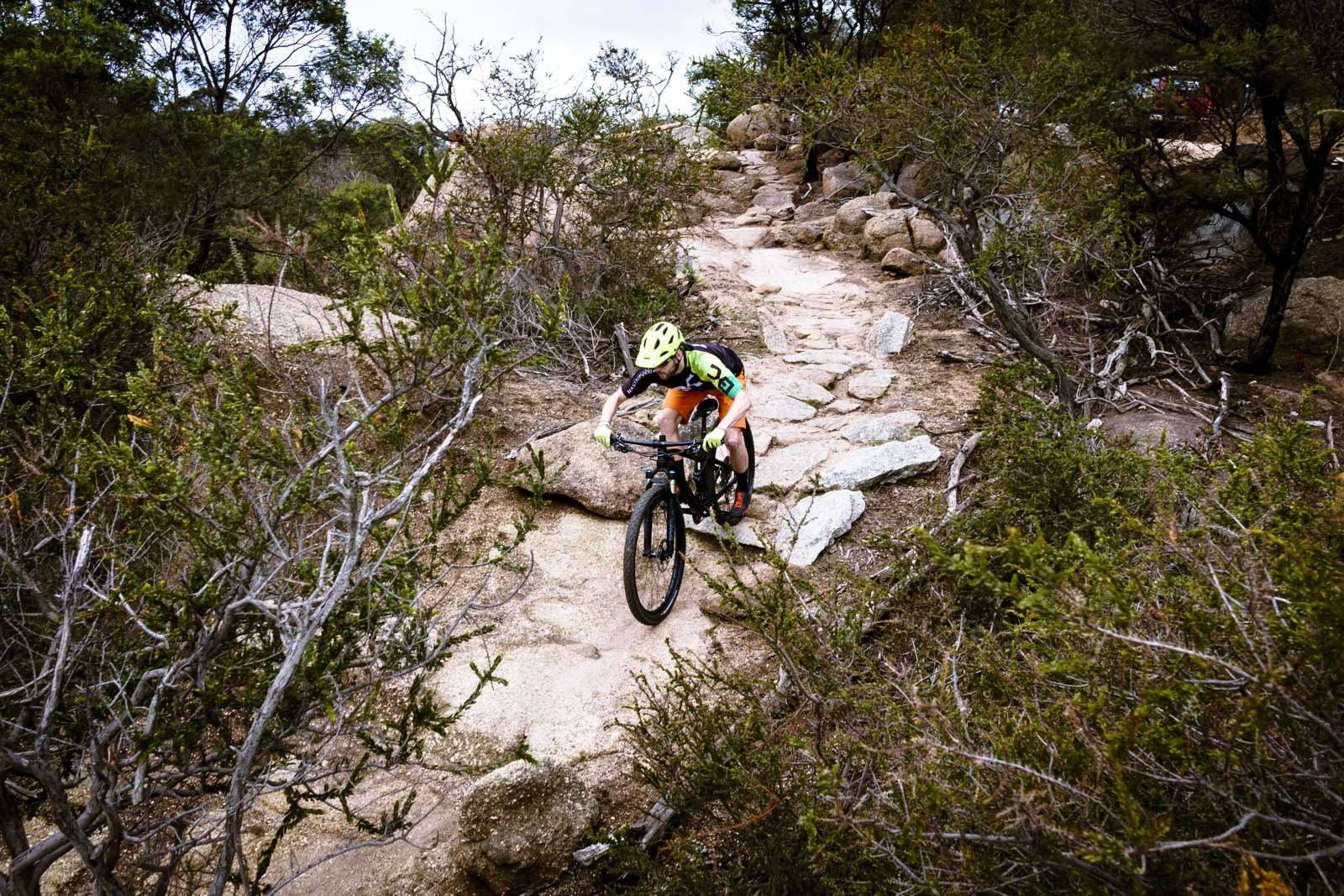
Once aboard, it doesn’t take long to feel at home inside the Nerve’s cockpit. At cruising speeds, the upright riding position and smooth suspension provides a comfortable perch that you can pedal away all day long on.
In terms of acceleration, the Nerve doesn’t quite offer the same snappy response of a dedicated XC race bike, but it does pedal very well. Those big wheels take a little longer to get up to speed, and if you stand up on the pedals and hammer, you’ll be met with plenty of untoward suspension movement. Remain seated and spin at a slightly higher cadence though, and you’ll be rewarded with excellent efficiency and good momentum as the trail roughens up.
Once you start ducking and weaving through singletrack, the Nerve’s sporty handling begins to shine. Overall chassis stiffness is excellent, both from the frame and the brilliant DT Swiss wheels. Weighing in at a confirmed 1676gm, the stiff XM1501 wheelset uses a decent 22.5mm internal rim width and is equipped with the bombproof 36pt Star Ratchet freehub mechanism. Along with the Fox 34, they’re a big reason why the Nerve handles so well. The modern cockpit setup also encourages you to lean the bike over through the turns, and the well-built frame ensures that your steering inputs at the head tube and bottom bracket are promptly transmitted into the tyre contact patch.
Climbing on the Nerve is assisted by the long chainstays and 73.8-degree seat angle, which help to push rider weight further over the bottom bracket. You’ll still need to get down low over the grips to stop the front wheel from wandering on the steeper stuff, but the efficient suspension design and smooth-rolling 29” wheels mean the Nerve will chug away at the climbs with minimal fuss. Scaling techier ascents was a mixed affair though. Drop down into the 26t granny ring, and pedal kickback rears its ugly head. This was fine on smoother climbs, but it became a problem when trying to negotiate tricky rock ledges, where the Nerve’s rearward axle path would cause the chain to tug away at the pedals. This also means the shock firms up under power, reducing traction and robbing you of precious momentum. Consequently, I learned to approach rougher climbs in the 36t chainring, so that the rear suspension remained sufficiently active to maintain grip.
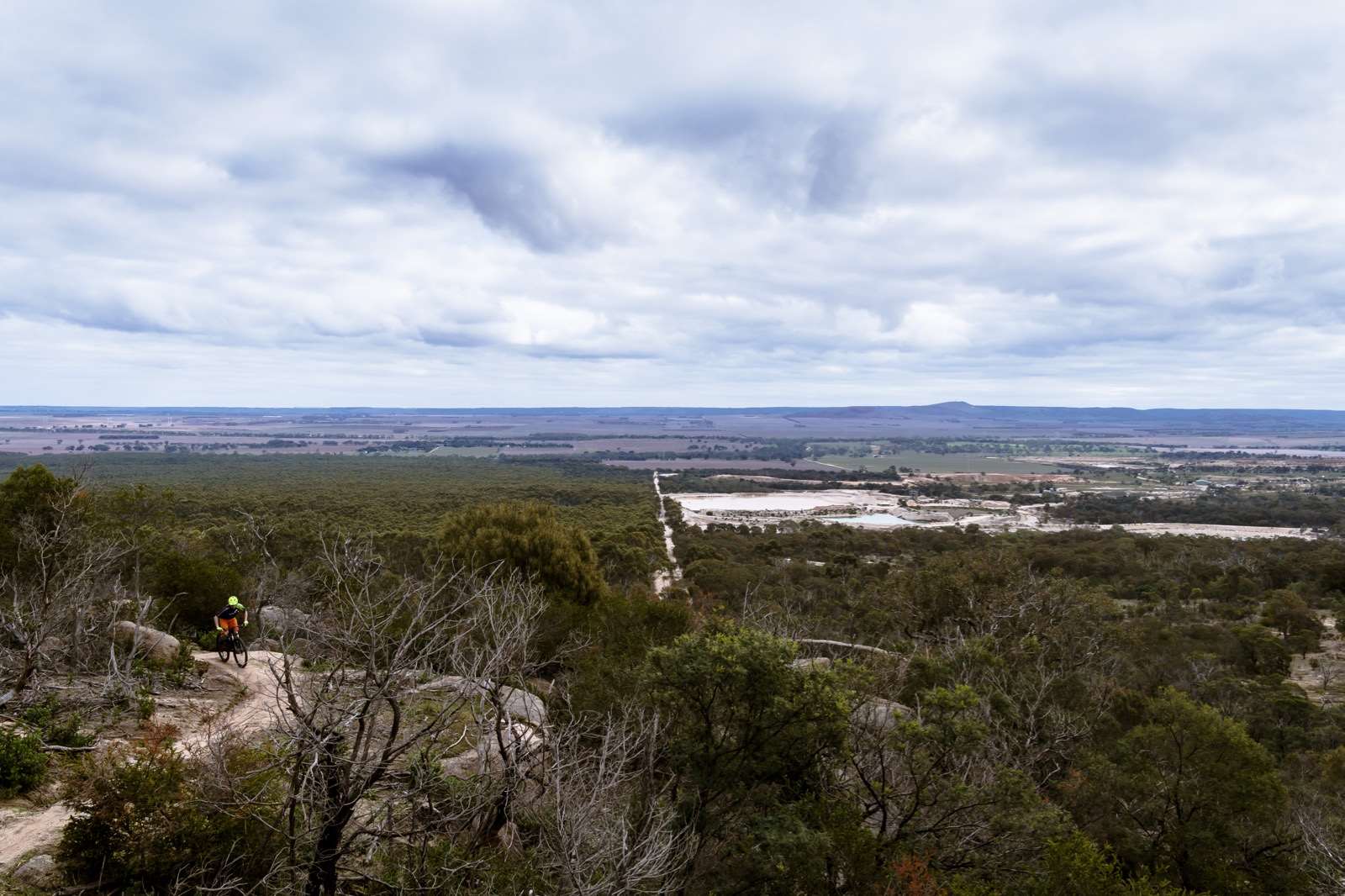
Whilst the Nerve felt relatively composed on its first outings, it didn’t take long to uncover a problem with the rear suspension. Hitting anything remotely rough or landing off small ledges saw the shock blowing through its travel quite spectacularly, resulting in a harsh bottom-out felt through the entire frame. Bottoming suspension isn’t always a problem, but it is if it’s happening regularly during the one ride. In my case, hitting a gutter at rolling speed would see the Nerve use all of its travel.
After confirming with Canyon and Fox that the shock was fine, I decided to try upping the spring pressure. I also tried fitting the largest volume spacer inside the air can to give the shock more progression. By the time I got to 170psi, I was able to eliminate the bottom-out issue on the rear shock, but it came with several compromises. Sag was now at around 15%, which made the shock feel uncomfortably firm on smaller bumps. It also lifted the bike’s ride-height, raising the bottom bracket and the overall centre of gravity. This had the effect of pushing more weight onto front wheel, which steepened the effective head angle and overworked the fork. To counteract this, I had to increase pressure there too.
The end result wasn’t particularly fun to ride. I now had a firm XC bike dressed in heavy trail-bike clothing. The Nerve is already a little old school in its geometry, and the higher operating pressures only exacerbated this. It was certainly fast on smoother flow trails, but far too twitchy and nervous on anything steep or rough.
After a few rides like that, I returned the suspension settings back to my original setup, with just a fraction more pressure in the shock at 150psi. I also adjusted my riding style to avoid lifting the wheels off the ground as much as possible, which meant I was only bottoming out once or twice in a ride. It still wasn’t ideal, but it proved to be the best compromise.
What I found weird about this experience is that I’m neither a heavy or aggressive rider. As such, an 80-90kg rider will only amplify the problems I encountered. While I didn’t have a chance to experiment with different shocks, I would have loved to try the Nerve the smaller SV air can. In theory, a smaller volume would deliver a more progressive spring rate without having to resort to higher pressures and reduced sag. Of course the issue this presents to any potential customers is that swapping out shocks is not a cheap exercise.
Our Take
Shock issues aside, there’s still a lot to like about the Nerve. It features a well-constructed frame and an excellent parts spec that addresses the needs of the modern trail rider. It offers responsive handling and loads of lateral stiffness when dumping it into corners before popping out the other side. It may not have the same high-speed descending composure as slacker contemporaries like the Santa Cruz Tallboy and the Pivot Mach 429 Trail, but it makes up for it with its nimble steering and sporty feel. It’s also a very comfortable bike to ride, so those seeking a companion for all-day missions on smooth singletrack will appreciate what the Nerve has to offer.
The main problem with the Nerve AL 9.9 however, is that the build kit is more capable than the frame geometry and rear suspension. Everything about the Nerve begs you to go fast, but as soon as you start opening it up, the rear shock blows through far too easily. And it’s a shame, because the Nerve has a lot of potential to be a very fast and fun trail bike.
Brand Canyon
Model Nerve AL 9.9
RRP $3999 (plus $199 shipping)
Weight 12.67kg
Contact www.canyon.com
